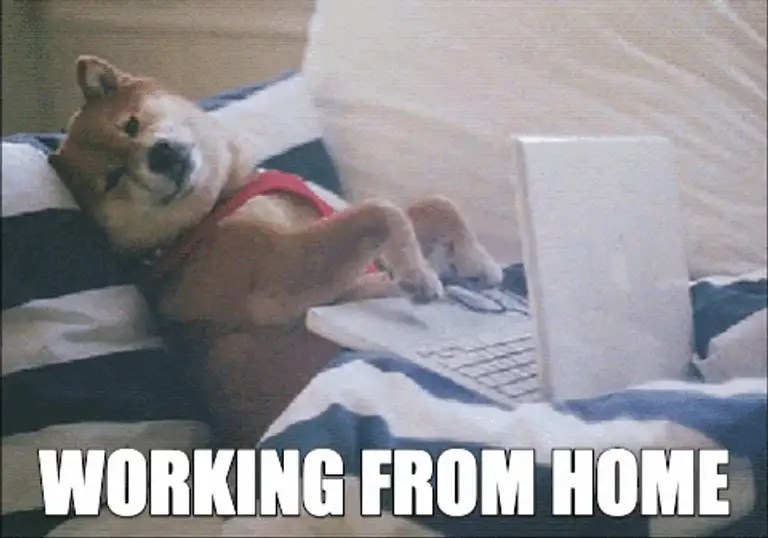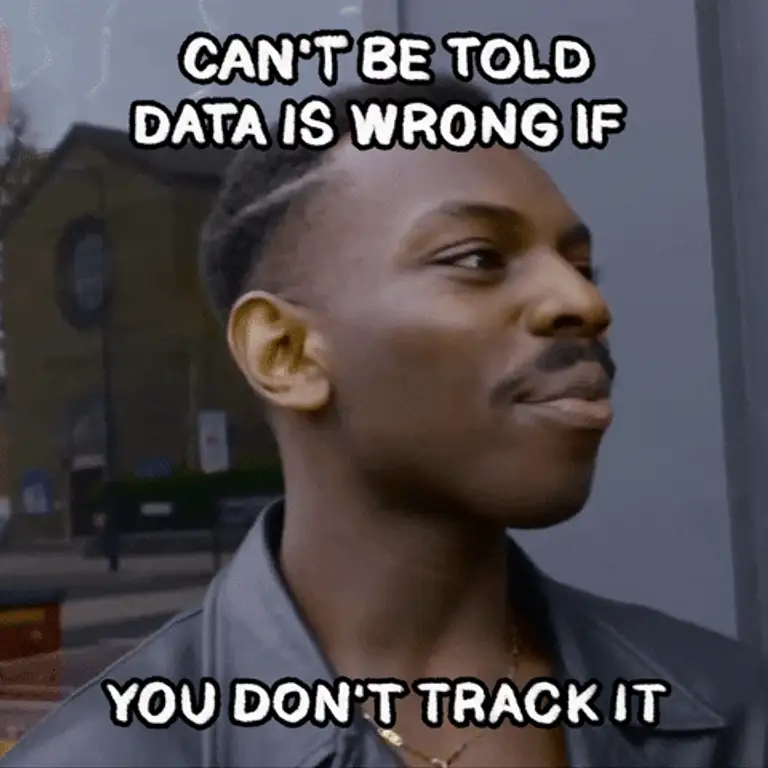As someone who has been both a manager and a marketer, I know firsthand how important work time tracking can be. But let's be real, it's not always sunshine and rainbows. In fact, it can feel more like a chore than a useful tool. That's why I've put together a list of 10 antitrends for 2023 in work time tracking that are sure to make you rethink how you approach this essential part of management. Trust me, I've been there - work time tracking can feel like a necessary evil at times.
But with these tips, we can make it a little more human and a lot less whip-like. Plus, who doesn't love a little wit and humor when it comes to work-related advice?
So buckle up and get ready for some clever insights on how to approach work time tracking in 2023.
Antitrend 1: Do Not Control - Use Work Time Tracking to Boost Productivity

Ah, the age-old question: to trust or to micromanage? As a manager, you want to make sure your team is productive and hitting their goals, but at what cost? Micromanagement can be a one-way ticket to Burnoutville for everyone involved. Trust, on the other hand, can work wonders. After all, you hired your team for a reason, right?
That's why I'm putting "Do not track your employees/teammates' work time just to control them" as our first antitrend for 2023. Trust is key, folks. Without it, you're just spinning your wheels. Plus, if you think you can control every little thing your team does, you might want to consider finding a good therapist (no shame in that, by the way).
Instead, let's use work time tracking to optimize our processes and boost productivity. For example, you can use it to track time spent on projects vs. revenue generated from those projects. Say "thank you" to clients who are making it rain and consider pivoting away from those who are more of a drizzle. You can also use it to track time spent on task groups, and find ways to automate those time-sucking tasks.
Think outside the box! Use work time tracking to swap your workforce around and make sure everyone is being utilized to their full potential. You might be surprised to find out that your marketing wiz is actually a killer salesperson, or that your HR guru has a knack for social media.
Remember, you're the expert in your field. So don't just watch your team, manage them! Draw conclusions, make adjustments, and pivot to the peak. Your team (and your sanity) will thank you.
Antitrend 2: Don't Underestimate the Power of Work Time Tracking in Remote and Distributed Teams"

Remote work is the future, baby! But wait, what about work time tracking? Isn't that just for old-fashioned brick and mortar stores or factory workers? Heck no! Whether you're a tech-savvy startup or a rubber band factory (no judgment here), work time tracking can be a valuable tool for optimizing productivity and team performance.
Think about it - you might be living your best life on a beach in Bali, but your team is spread out across multiple time zones. How do you keep track of everyone's progress and ensure everyone is staying on task? Work time tracking, my friend! You can use it to track progress on a project, identify time-wasting tasks, and automate menial work.
But how do you implement work time tracking effectively in these remote settings? Good news, folks - it's not just about punching in and out anymore. You can use facial recognition to seamlessly clock in when an employee enters the building, or a camera on your laptop to ask your teammate if they're there. A simple "Stop-Start" button is always a good idea for remote work or field teams (shoutout to all the drivers out there!).
The point is, you have options. Whether you prefer a web browser or a mobile app, there's a work time tracking solution that can work for you. So don't let remote work hold you back from optimizing productivity and achieving your goals.
Antitrend 3: Ditch Pen and Paper, Go Green and Efficient with Digital Work Time Tracking

Let's not beat around the bush. As office workers, we all know the pain of moving and having to lug around mountains of paper - timesheets, PTO requests, travel reports, and payroll statements that we never really look at again. And that's just the tip of the iceberg! It's a waste of time and resources to use pen and paper for work time tracking, especially when digital tools are so readily available. And if you think waiting for a printer or writing by hand is the only time-wasting issue, think again!
Have you ever seen a manager fruitlessly hitting command+F to sift through paper documents, or a colleague clicking the "Funnel" icon in a vain attempt to filter data for a single teammate, or a scheduler copying and pasting shifts for a new week when the schedule stays the same? It's like a chef trying to fry an egg on a stone, or a pilot attempting to fly a plane with a bicycle pedal. It just doesn't make sense.
Now, let me share some insider knowledge with you, my friends. If you're looking for a tool that has all the basic features needed for effective work time tracking, just do a quick online search for "work time tracking" and you'll find plenty of options based on popularity in your location. But if you're feeling a bit lazy, no worries! I'll do the work for you. /commercial break/ Check out the tool that I work for, Unrubble (formerly known as TrackTime24). With Unrubble, you can easily schedule, track time, integrate with payroll systems, and register PTOs and business travels - all connected into handy reports that are always with you, since we also have free mobile apps for both managers and employees. /end of commercial break/
Antitrend 4: Stop Using Partial Tools

To integrate or not to integrate? It's like asking whether you prefer your peanut butter and jelly sandwich with separate spreads or with the jelly already mixed in. Sure, you could painstakingly transfer data from one tool to another, but why put yourself through the trouble? As any Apple fanatic can attest, the magic lies in a comprehensive ecosystem that seamlessly connects all your devices. So why not take a cue from the tech giant and opt for a work time tracking tool that includes scheduling and PTO tracking features, instead of relying on partial solutions that just complicate things? It's time to say goodbye to the hassle of piecing together information from multiple sources, and hello to a smoother, more productive workflow.
Ready for the ultimate integration game-changer? Look no further than the all-in-one solutions that offer everything from time tracking to project management to payroll integration. Choose software that allows you to manage your team's entire workflow from one central hub, eliminating the need for tedious data entry across different platforms. With features like automated reminders and customizable reporting, these tools take the headache out of work time tracking and let you focus on what really matters - running your business like a boss. So why settle for partial tools when you can have it all?
Antitrend 5: Stop tracking time as a whole and start granulating your data

How you track your team's time says a lot about why you're tracking it. If you're tracking time like a caveman, with a club and a blunt instrument, you're probably only concerned with making sure your team is chained to their desks for a certain number of hours. But if you want to manage your projects and resources with accuracy and finesse, you need to track time at a granular level. That means keeping track of the time spent on each specific task or project, so you can optimize your team's work and identify areas where you can improve efficiency.
It's important to keep in mind that not all project management tools include time tracking features. When choosing a tool, look for ones that include both project management and time tracking functionality to ensure that you're getting the full picture. With the right tools in hand, you can unlock a whole new level of productivity and efficiency for your team, and become a true master of your domain.
Antitrend 6: Ditch Manual Data Entry, Let Integrations Do the Work

Ugh, we've all been there, right? Staring at a spreadsheet, trying to match up names and numbers, and going cross-eyed in the process. And what happens? You make one tiny mistake and it all goes pear-shaped. It's enough to make even the most patient of us want to throw our laptops out the window. But you know what's even worse? The fact that manual data entry is so darn error-prone. It's like trying to juggle with your eyes closed - sooner or later, you're gonna drop the ball. And that can be bad news, especially if you've got an angry employee (or three) breathing down your neck.
Thankfully, there are plenty of time tracking tools out there that play nicely with time tracking systems, like Xero and QuickBooks. So if you're already using a time tracker, chances are it has integrations available. So why waste your time (and sanity) on manual data entry when you could be doing something more fun, like organizing your sock drawer or trying to beat your high score on Flappy Bird? Plus, if you don't have a time tracking tool yet, just make sure you look for one that's integrated with your payroll system - your future self (and your angry employees) will thank you for it.
Antitrend 7: Do not fire your employees before you optimize

Firing employees may seem like an easy fix, especially when we see large companies like Google or Amazon doing it. But the truth is, layoffs should always be the last resort. For small and agile businesses, investing in your employees can be a much better option. Do instead, focus on optimizing your employees' work. Take a look at their work time tracking data to identify opportunities for improvement and coach them for better productivity. Switch up their roles, give them new challenges, and expand your service offerings if you think they can handle it. And how do you check if they have the bandwidth for it? You guessed it - work time tracking software. Now, let me give you some real-world examples of what you can do with work time tracking data:
🕰️ Check how much time and money is being spent on each project - end projects that don't provide positive outcomes and revenue.
🕰️ Check if your employees' workloads are balanced - if not, give them new tasks from other departments, like sales or marketing.
🕰️ Identify the most profitable projects and focus your team on upselling your services - it's always more profitable to upsell than to sell to a new client.
🕰️ And don't forget about lateness - it can be a major productivity killer. If you have team members who are always late, consider implementing overhours to regain the lost time.
These are just a few ideas to get you started. Remember, you know your team and your niche best, so be creative! And if you need a little extra help, a good old SWOT analysis can work wonders.
Antitrend 8: Do not use a tool unless it has a free mobile app

Have you ever been weighed down by a heavy gate, or the clunky plastic ID cards of traditional time tracking? Let’s face it, these methods are outdated and just a waste of time and money. In this modern era, where we spend an average of 6 hours a day on our mobile devices, there's no need to add unnecessary devices to our already cluttered work environment.
The solution is simple: use what you already have – your mobile device. With modern timekeeping software, you and your employees can easily track time and manage schedules through mobile apps. Plus, using mobile apps for time tracking not only saves time and money, but also helps reduce paper waste. And let's be honest, who needs more paperwork in their life?
But don't settle for just any time tracking app – make sure it includes features that traditional timekeeping methods can't match. This means geofencing, facial recognition, and registration in low-light environments, to ensure accurate tracking. With a mobile app that has these capabilities, you can enjoy the convenience of having your entire work time tracking system in your pocket. So, don't let outdated time tracking methods weigh you down – upgrade to a mobile app and watch your productivity soar.
Antitrand 9: Don't Settle for the Status Quo: Embrace Change in Work Time Tracking

In the world of business, change is not just a buzzword - it's a necessity for survival. Being open to new and innovative work time tracking solutions is key to keeping your company ahead of the game, especially in today's unpredictable times. If you're stuck in your ways and resistant to change, you're limiting your company's potential for growth and success.
It's not enough to simply react to changes as they occur - you need to be prepared for anything that may happen in the future. This means staying up-to-date with emerging technologies and being curious about modern solutions that can help your company stay ahead of the curve. By relying on tools that go with the times, you can arm your business with the adaptability and flexibility needed to weather any storm.
For example, the recent pandemic forced many companies to shift to remote work almost overnight. Companies that had already embraced online work time tracking with time tracking software were able to easily maintain the continuity of information and working time, while others had to adapt to this change in a hurry. Digitizing company documentation also proved to be invaluable, making quick changes a breeze and avoiding the hassle of unchangeable paper documentation.
To ensure that your company is as adaptable and independent of external, variable factors as possible, it's essential to embrace change in work time tracking. By doing so, you'll have the tools to weather any storm and stay ahead of the game in the unpredictable world of business.
Antitrend 10: Don't Track Time Unless It's Seamless

Let's face it, time tracking can be a real pain in the neck. Nobody wants to spend their time on tedious data entry or navigating clunky software. But here's the thing: if your time tracking isn't seamless and unobtrusive, it can actually hinder productivity and hurt your business. When your employees are constantly struggling with a time tracker that's difficult to use or requires a lot of manual input, it can slow them down and distract them from their actual work. Not to mention, it can lead to errors and inconsistencies in your data.
That's why it's crucial to choose a work time tracking tool that prioritizes ease of use and automation. Look for features that make tracking time as effortless as possible, like automatic time capture, mobile apps, and integrations with other business tools. The ideal time tracking solution should seamlessly blend into your team's workflow, without requiring a lot of extra effort or attention. It should be intuitive and user-friendly, with minimal setup and maintenance required.
Of course, finding the perfect time tracking tool is easier said than done. But with a little research and experimentation, you can discover a solution that truly works for your team. Just remember, the key is to focus on seamlessness and simplicity. After all, the less time your team spends on time tracking, the more time they can devote to the tasks that actually move your business forward.
Summary
As we wrap up our discussion of the key antitrends in work time tracking for 2023, it's clear that businesses will need to remain vigilant and adaptable in order to succeed. With the rise of hybrid work arrangements and the increasing importance of employee autonomy and work-life balance, traditional approaches to time tracking are becoming less and less effective. In the immortal words of the great Bob Dylan, "The times they are a-changin'," and businesses that refuse to change with them may find themselves left behind.
But fear not, intrepid business leaders! This isn't all doom and gloom. In fact, this is an exciting opportunity to embrace new solutions and approaches to time tracking that can help your business thrive in the years ahead. Whether you're exploring cutting-edge software platforms or experimenting with innovative approaches to scheduling and time management, the key is to take a proactive approach and stay open to new ideas. As the old saying goes, "If you always do what you've always done, you'll always get what you've always got." So why not shake things up and try something new?
In conclusion, the antitrends we've explored today highlight the need for businesses to be flexible, responsive, and forward-thinking when it comes to work time tracking. By embracing new solutions and taking a proactive approach to time management, businesses can help ensure their success in the years ahead. So go forth, dear reader, and embrace the future! And if you need a little inspiration along the way, just remember the wise words of the great philosopher Yogi Berra: "The future ain't what it used to be."





